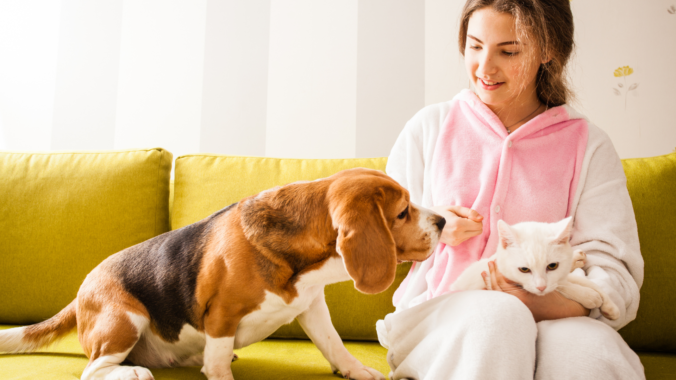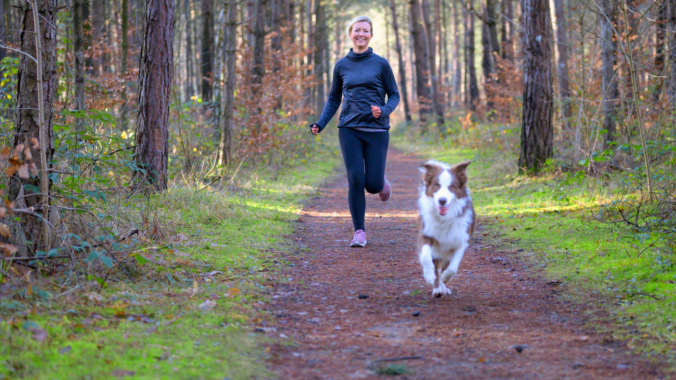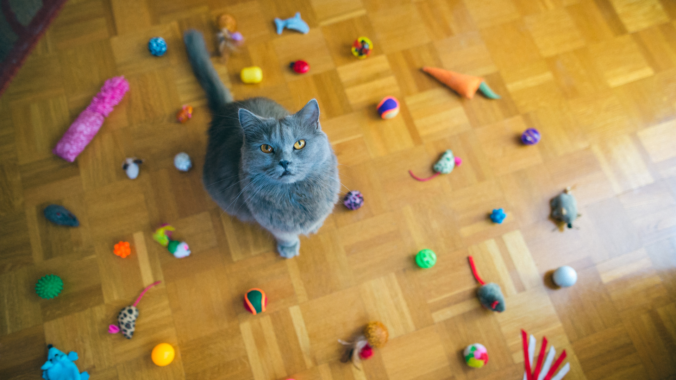Are we looking to make our home a comfortable and safe haven for our furry friend? Look no further! Creating a pet-friendly home doesn’t mean compromising style or functionality. With our expert tips, we can design a space that caters to our loyal companion’s needs. From durable flooring to cosy beds, we’ve got everything covered so that we can enjoy the company of our four-legged family member without any hassle. So let’s dive in and transform our house into a paw-some paradise!
Choosing Pet-Friendly Materials and Furniture
If we’re considering adding a pet to our family, it’s essential to consider what environment they’ll be living in. A pet-friendly home will provide plenty of surfaces and areas to explore and comfortable furniture that accommodates their size and personality. When choosing materials for our home, be sure to take into account how pets might react. Soft fabrics like cotton or wool are great for humans but can be scratchy or dangerous for pets’ claws. Instead, choose materials like sisal or bamboo, which are softer on the skin but still durable.
Consider how our pet will use the space when furnishing our home. If we have a dog, consider including a large breed-specific dog house in the backyard so they have a place to go when they need some alone time. If we have a cat, try stacking several Persian rugs so they have many places to play and hide.
And, if we have any smaller animals like guinea pigs or hamsters, make sure their cages are big enough for them to move around comfortably.
Securing Potential Hazards
Creating a pet-friendly home is essential for our safety and our furry friends. Here are some tips on how to create a safe and comfortable environment for all creatures residing in our home:
- Keep the floors clean. This may seem obvious, but ensuring the floor is regularly swept and vacuumed will help prevent accidents and keep our home cleaner.
- Make sure windows are properly sealed. Pets can accidentally escape through small openings, so it’s essential to ensure windows are properly closed to prevent them from escaping.
- Lock up all doors and gates. Pets can quickly escape their enclosures if not secured properly. Ensure each door and gate has a secure lock and proper signage indicating which areas are off-limits to pets.
- Install fencing or barriers. If we don’t want our pet to be able to access certain areas of the house, install fencing or barriers around those areas. Be sure to use barriers made from sturdy materials that won’t easily break down, as pets can be quite strong!
Training for Good Behaviour in the Home
House training a pet can be daunting, but it can be done with the proper techniques and patience. One of the most important things we can do is to train our pets from an early age. This will help them understand our rules and behaviours in the home. Establishing basic rules is one of the easiest ways to train our pets. Ensure all our pets know not to chew on furniture or other personal belongings. Also, make sure they know not to greet people at the door or jump on them when they come home. Another important rule is to keep pets confined during certain times of the day or when we’re not home. This will help prevent them from getting into trouble and keep them safe from other animals in the neighbourhood.
If our pet breaks these rules, take corrective action immediately. Try to find out why they behaved that way and use that information to teach them better behaviour in the future.
Regular Cleaning and Maintenance
Regular cleaning and maintenance of our home will help keep it healthy for us and our pets. Here are a few tips to get started:
Keep Windows and Doors Clean
Pets can enter and exit our homes through these openings, so keeping them clean is essential. Also, pet hair can be frustratingly difficult to remove from glass. Use a window cleaner specifically designed for this purpose.
Teach Pets Good House Manners
Teaching our pets proper litter-box etiquette and avoiding high-traffic areas will significantly reduce the messes they make in our homes. Ensure we provide plenty of toys and chew bones so they have something to do while we’re away!
Vacuum Regularly
Not only does a regular vacuum help remove debris, but it also helps circulate air throughout the house, which is especially beneficial for cats who love to nap high up in trees or on top of furniture (or humans!). Be sure to use a vacuum with a HEPA filter if possible; dust mites can thrive in an unclean environment.
A Comfortable and Pet-friendly Home
Creating a pet-friendly home can be challenging, but it’s ultimately worth it. Aside from providing our pets with the companionship they crave and need, creating a welcoming environment also helps keep our house clean and allergens-free. By following these simple tips, we can create a space that is both comfortable and accommodating for all of our furry friends.




